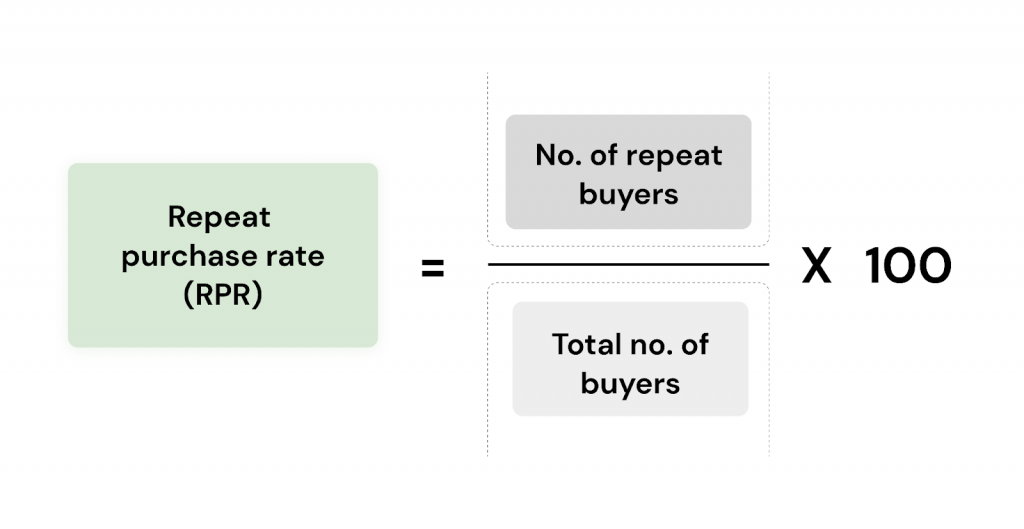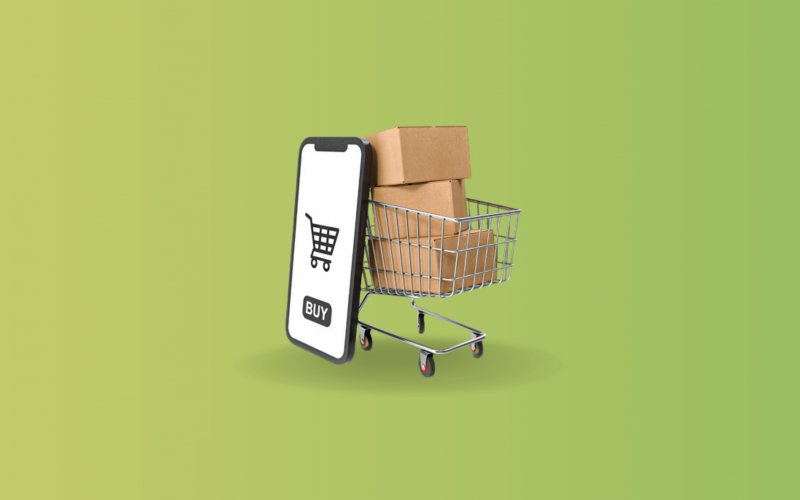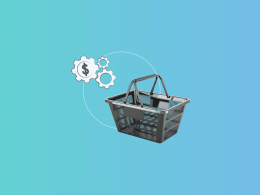In the competitive world of ecommerce, businesses are constantly striving to attract new customers. However, what many fail to realize is the importance of retaining existing customers and encouraging repeat purchases. Increasing the repeat purchase rate is a key strategy for ecommerce businesses to drive revenue and build customer loyalty.
Contents:
1. What is the repeat purchase rate?
2. Why is repeat purchase rate important for ecommerce businesses?
3. How to calculate repeat purchase rate?
4. Understanding customer data for improving repeat purchase rate
5. Importance of repeat purchase rate in ecommerce
6. Strategies to increase repeat purchases
7. The impact of customer retention on repeat purchase rate
8. Connection between repeat purchase rate and conversion rate
9. Addressing customer abandonment rate to improve repeat purchase rate
10. Best practices for nurturing existing customers and encouraging repeat purchases
11. Repeat purchase rate benchmarks by industry
What is the repeat purchase rate?
Repeat purchase rate, also known as repeat customer rate or RPR, is a customer retention metric that calculates the ratio of returning customers against the total number of customers. It reveals the percentage of customers who come back to make repeated purchases, indicating their loyalty to your brand.
Understanding your repeat purchase rate is crucial because it provides insights into customer behavior and loyalty. A higher repeat purchase rate signifies a larger base of loyal customers who trust and prefer your products or services.
Why is repeat purchase rate important for ecommerce businesses?
The repeat purchase rate is a powerful indicator of customer loyalty and satisfaction. It’s far more cost-effective to retain existing customers than to acquire new ones. Studies have shown that acquiring a new customer can cost up to five times more than retaining an existing one. Therefore, focusing on increasing your repeat purchases can have a significant impact on your bottom line.
A high repeat purchase rate also indicates that your customers trust your brand and have had positive experiences with your products or services. This trust and satisfaction can lead to positive word-of-mouth referrals, which can further expand your customer base and drive more revenue.
How to calculate repeat purchase rate?
Calculating repeat purchase rate is relatively straightforward. It involves comparing the number of customers who make repeat purchases to the total number of customers. The formula is as follows:
Repeat Purchase Rate (RPR) = (Number of Repeat Buyers / Total Number of Buyers) x 100

For example, if you have 500 customers and 200 of them have made repeat purchases, your repeat purchase rate would be (200 / 500) x 100 = 40%.
You can calculate the repeat purchase rate for different time periods (monthly, quarterly, or annually). This allows you to track changes in customer loyalty and assess the effectiveness of your retention strategies over time.
Understanding customer data for improving repeat purchase rate
To effectively improve your repeat purchase rate, you need to understand your customers’ behavior and preferences. Customer data plays a crucial role in gaining these insights. By analyzing data such as purchase history, browsing behavior, and demographic information, you can tailor your marketing efforts to better meet your customers’ needs.
Use customer relationship management (CRM) tools and analytics platforms to track and analyze customer data. These tools provide valuable metrics and reports that can help you identify patterns and trends. By understanding your customers’ preferences, you can personalize your marketing messages and offers, increasing the likelihood of repeat purchases.
Importance of repeat purchase rate in ecommerce
Repeat purchase rate plays a vital role in the success of an ecommerce business. Here’s why it matters:
1. Higher profitability
Repeat orders translate into higher profitability on each acquisition cost. When customers make multiple purchases, the customer lifetime value (CLV) increases, resulting in more revenue. For example, if your customer acquisition cost (CAC) is $5 and the CLV is $15, you make a profit of $10. However, if the CLV goes up to $40, your profit increases to $35. By increasing the repeat purchase rate, you can significantly improve your return on investment (ROI).
2. Product-market fit
A high repeat purchase rate indicates that your product or service resonates with your target audience. It signifies that you have achieved product-market fit, where customers find value in what you offer. A low repeat purchase rate may suggest that your product needs improvement or that your target audience isn’t fully satisfied.
3. Brand loyalty
When customers repeatedly purchase from your store, it demonstrates their loyalty to your brand. Satisfied customers are more likely to spread positive word-of-mouth recommendations, which can attract new customers and further increase your repeat purchase rate. Building a strong community of loyal customers can lead to sustained growth and brand advocacy.
4. Revenue stability and forecasting
A high repeat purchase rate provides a steady stream of revenue for your business. By analyzing the behavior of your repeat customers over time, you can make accurate sales forecasts and plan your marketing strategies accordingly. This stability allows you to allocate resources effectively and make informed business decisions.
5. Cost-effective marketing
Acquiring new customers can be expensive, requiring significant marketing efforts and resources. In contrast, retaining existing customers and encouraging repeat purchases is more cost-effective. By increasing the repeat purchase rate, businesses can allocate their marketing budget more efficiently and achieve a higher ROI.
Strategies to increase repeat purchases
To boost your repeat purchase rate, you need to implement effective strategies that encourage customer loyalty and retention. Here are 10 key strategies to consider:
1. Provide an exceptional customer experience
Delivering a seamless and personalized customer experience is crucial for encouraging repeat purchases. Focus on providing excellent customer service, addressing customer concerns promptly, and exceeding their expectations. Personalize communication and offer tailored recommendations based on customer preferences and purchase history.
2. Nurture customer relationships through email marketing
Email marketing is a powerful tool for nurturing customer relationships and driving repeat purchases. Create targeted email campaigns to engage customers, share personalized product recommendations, highlight exclusive offers, and provide valuable content. Use automation to send triggered emails based on customer behavior, such as abandoned cart reminders or post-purchase follow-ups.
3. Offer loyalty programs and incentives
Implement a loyalty program that rewards customers for their repeat purchases. Offer incentives such as discounts, exclusive access to new products, or free shipping for loyal customers. Gamify the experience by introducing tiers or point systems to encourage customers to reach higher levels and unlock more rewards.
4. Use shopping assistant chatbot:
Introduce an AI-powered Shopping Assistant chatbot that engages customers in real-time conversations, suggesting relevant products that align with the customer’s preferences, making the shopping process more convenient and enjoyable. By providing personalized recommendations and assistance, the Shopping Assistant chatbot enhances customer satisfaction, fosters loyalty, and encourages repeat purchases.
5. Implement a customer feedback loop
Gather valuable feedback from customers to gain insights into their needs, preferences, and concerns. Use this feedback to enhance your products, services, and overall customer experience. Engage customers by asking for their opinions, conducting surveys, and actively listening to their feedback. Show that their input is valued and take appropriate actions to address their concerns.
6. Optimize the checkout process
Streamline the checkout process to make it quick, easy, and hassle-free for customers. Minimize the number of steps required to complete a purchase, offer guest checkout options, and pre-fill customer information whenever possible. Provide multiple payment gateway options and ensure that the checkout page is mobile-friendly for customers who prefer to shop on their smartphones.
7. Leverage data analytics
Utilize data analytics to gain insights into customer behavior, preferences, and purchase patterns. Analyze customer data to identify opportunities for personalized marketing campaigns, segment customers based on their behavior, and tailor messaging and offers accordingly. Use data-driven insights to optimize your marketing strategies and improve customer retention.
8. Implement post-purchase follow-up
After a customer makes a purchase, follow up with them to express gratitude, confirm the order details, and provide any necessary post-purchase support. Use this opportunity to offer additional recommendations, ask for feedback, and encourage customers to leave a review or to share their positive experiences on social media.
9. Engage customers on social media
Create a strong presence on social media platforms to engage with customers, build relationships, and encourage repeat purchases. Share valuable content, run contests or giveaways, and respond promptly to customer inquiries or comments. Use social media platforms as a channel for customer support and to showcase new products or exclusive offers.
10. Continuously improve and innovate
Maintain a competitive edge by consistently enhancing your products, services, and overall customer experience. Monitor industry trends, listen to customer feedback, and adapt your strategies accordingly. Innovate and introduce new products, features, or services that cater to the evolving needs and preferences of your customers.
The impact of customer retention on repeat purchase rate
Customer retention and repeat purchase rate are closely intertwined. When you focus on retaining existing customers and building strong relationships with them, you naturally increase the likelihood of repeat purchases.
One effective way to improve customer retention is by providing exceptional customer service. Respond promptly to customer inquiries and resolve any issues or concerns they may have. By delivering a positive customer experience, you can build trust and loyalty, leading to repeat purchases and long-term customer relationships.
Connection between repeat purchase rate and conversion rate
The repeat purchase rate and conversion rate are two key metrics that go hand in hand. While the conversion rate measures the percentage of website visitors who make a purchase, the repeat purchase rate measures the percentage of customers who make more than one purchase.
By optimizing your website and improving your conversion rate, you can increase the pool of potential repeat customers. A seamless and user-friendly shopping experience, clear product descriptions, and persuasive call-to-action buttons can all contribute to a higher conversion rate and, ultimately, a higher repeat purchase rate.
Addressing customer abandonment rate to improve repeat purchase rate
Customer abandonment rate refers to the percentage of customers who add items to their shopping cart but leave the website without completing the purchase. Addressing this issue is crucial for improving your repeat purchase rate.
To reduce customer abandonment, consider implementing the following strategies:
1. Streamline the checkout process
Simplify the checkout process by minimizing the number of steps and removing unnecessary form fields. Offer guest checkout options to reduce friction and improve the overall user experience.
2. Offer abandoned cart recovery emails
Send automated emails to customers who have abandoned their carts, reminding them of the items they left behind and offering incentives to complete the purchase. This gentle nudge can significantly increase conversion and repeat purchase rates.
Best practices for nurturing existing customers and encouraging repeat purchases
Nurturing your existing customers is vital for maximizing your repeat purchase rate. Here are some best practices to consider:
1. Provide outstanding customer support
Promptly address customer inquiries and issues to ensure a positive experience. Offer various channels for customer support using live chat, email or phone, to cater to customers’ different preferences.
2. Create a seamless omnichannel experience
In today’s digital world, customers expect a seamless experience across multiple channels. Ensure that your online store, mobile app, and social media platforms provide a consistent and user-friendly experience.
3. Offer exclusive promotions and discounts
Reward your loyal customers with exclusive promotions and discounts. This approach not only encourages repeat purchases but also makes your customers feel valued and appreciated.
Remember, nurturing existing customers is a long-term investment that can yield significant returns in the form of repeat purchases and customer loyalty.
Repeat purchase rate benchmarks by industry
The average repeat purchase rate varies across industries. While the benchmark for successful ecommerce brands is around 25-30% of customers returning, it’s essential to recognize that specific product categories may have different rates due to factors like seasonality and purchase frequency.
For example, the tea industry typically experiences lower repeat purchase rates due to the seasonal nature of tea consumption. On the other hand, meal deliveries and supplements tend to have higher repeat purchase rates, given their continuous and regular use. CBD products have shown remarkable success with a repeat purchase rate of 36.2%, indicating strong customer loyalty.
Conclusion: Harnessing the power of repeat purchase rate for ecommerce success
Understanding and optimizing your repeat purchase rate is essential for boosting your ecommerce revenue and achieving long-term success. By focusing on customer retention, leveraging customer data, and implementing effective strategies, you can encourage repeat purchases and build a loyal customer base.
Remember to regularly monitor your repeat purchase rate, analyze customer data, and adapt your marketing efforts accordingly. By harnessing the power of the repeat purchase rate, you can unlock the full potential of your ecommerce business and drive sustainable growth.







.png)
